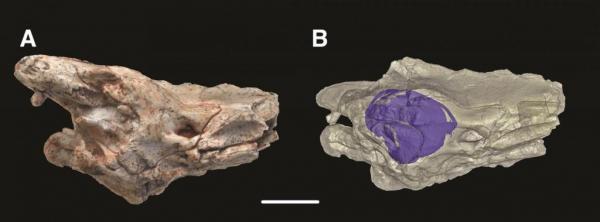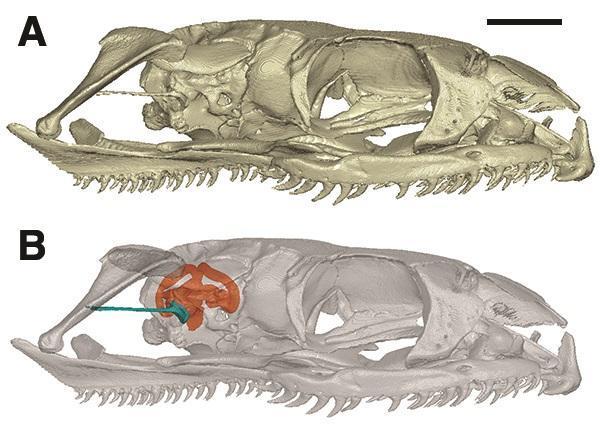Snakes lost their legs when they started to live and hunt in burrows.
When snakes began to hunt and live in burrows, they evolved to lose their legs, according to a new study that compared the CT scans of a 90 million-year-old snake fossil skill with that of modern day snakes.

Hongyu Yi/University of Edinburgh
Brain case and inner ear of Dinilysia patagonica fossil, which scientists at the University of Edinburgh and American Museum of Natural History have used to show that modern snakes lost their legs when their ancestors became expert burrowers.
According to lead researcher Hongyu Yi from the University of Edinburgh in England, the bony inner ear of Dinilysia patagonica, a close relative of modern snakes that reached two meters in length, was scanned and compared to those of modern snakes. Yi found that the ear of Dinilysia patagonica had a distinctive structure within the inner ear that is present in snakes that actively burrow, yet are lacking in modern snakes that live in water or above ground. These structures control hearing and balance.

Hongyu Yi/University of Edinburgh
This modern snake skull's inner ear cavity can be studied using CT scan technology.
"How snakes lost their legs has long been a mystery to scientists, but it seems that this happened when their ancestors became adept at burrowing," lead researcher Dr. Hongyu Yi of the University of Edinburgh's School of GeoSciences said in a press release. "The inner ears of fossils can reveal a remarkable amount of information, and are very useful when the exterior of fossils are too damaged or fragile to examine."
The complete paper can be read on the ScienceAdvances website.



